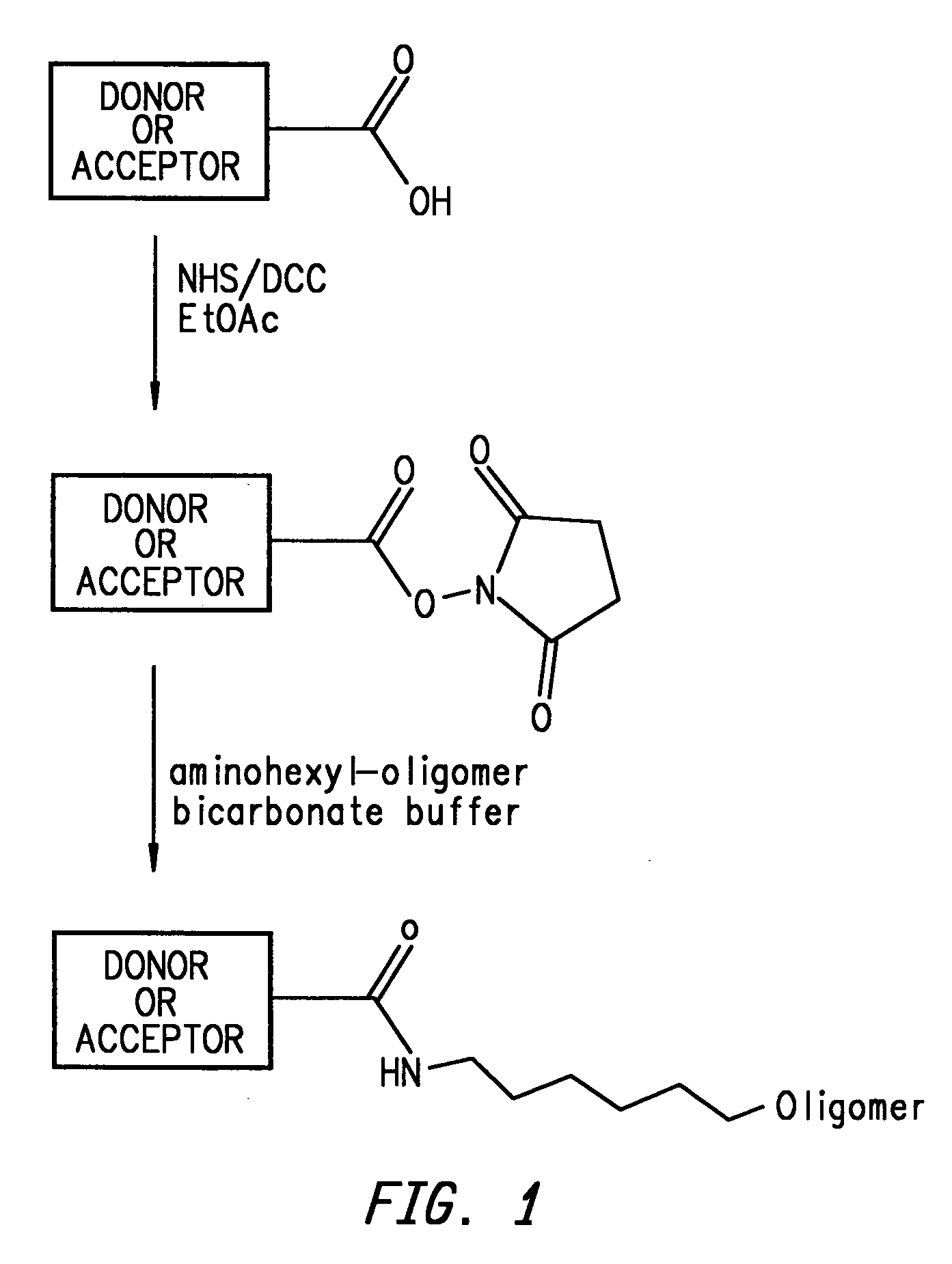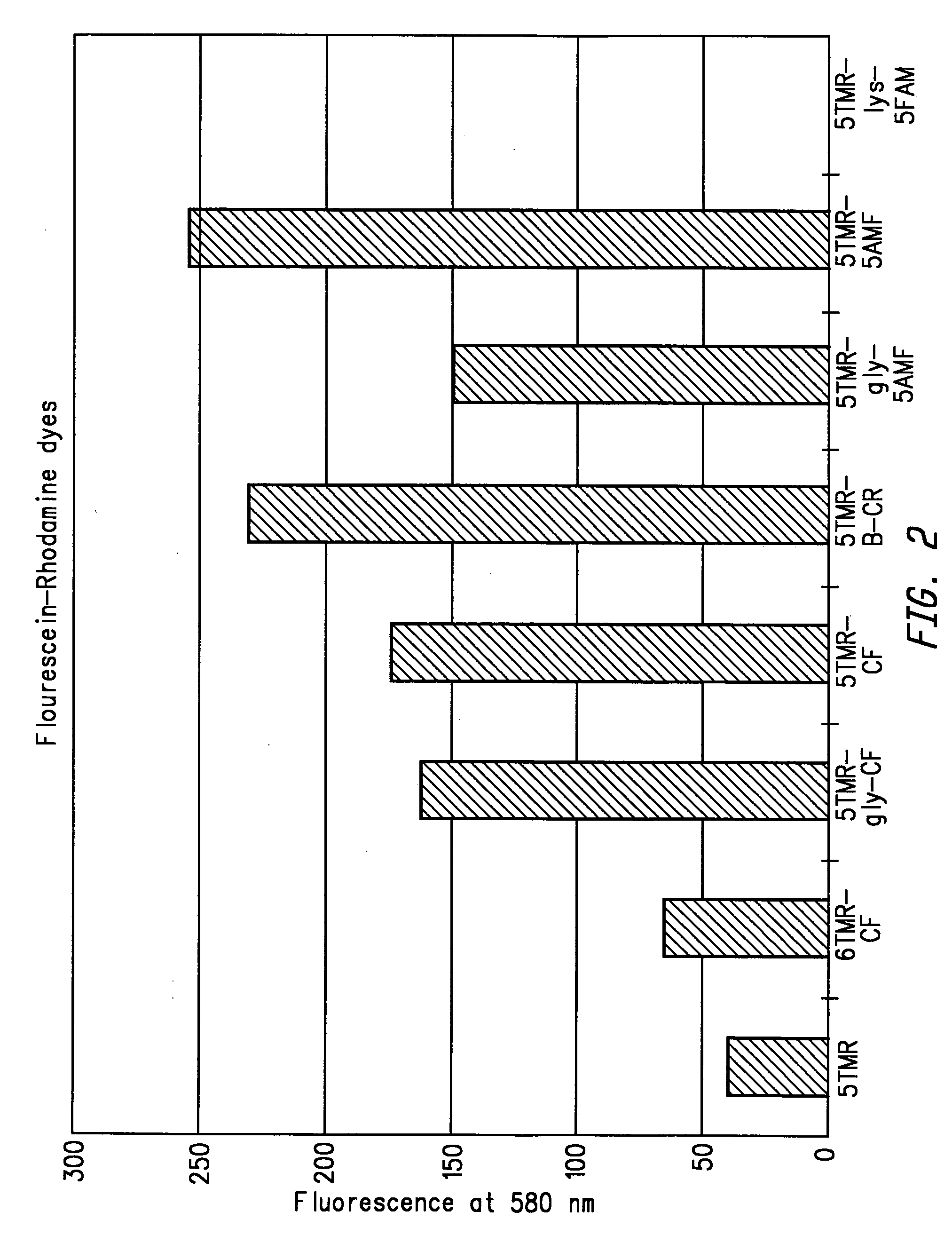Energy transfer dyes with enhanced fluorescence
a technology of energy transfer and fluorescence, which is applied in the field of fluorescent dyes, can solve the problems of wide spectrum, difficulty in finding a collection of dyes whose emission spectra are spectrally resolved, and generally not having the same absorbance maximum, etc., and achieves short and/or rigidity. , the effect of enhancing the transfer of energy
- Summary
- Abstract
- Description
- Claims
- Application Information
AI Technical Summary
Benefits of technology
Problems solved by technology
Method used
Image
Examples
examples
1. Synthesis of 5TMR-B-CF
[0240]
[0241]5TMR-B-CF was synthesized from 5-TMR NHS and 4′-aminomethyl-5-carboxyfluorescein according to the reaction sequences described in Examples 1A–C. 5TMR-B-CF was then converted to 5TMR-B-CF-NHS according to the reaction sequence described in 1D so that the dye could be coupled to a nucleoside, nucleotide or oligonucleotide primer.
[0242]A. Synthesis of 5-TMR-B
[0243]
[0244]A mixture of 4-aminomethylbenzoic acid (3 mg, 19 μmol), 5-TMR NHS (5 mg, 9 μmol) and triethylamine (20 μL) was suspended in dimethylformamide (DMF, 200 μL) in a 1.5-mL eppendorf tube. The mixture was heated to 60° C. for 10 minutes. Reaction progress was monitored by thin layer chromatography (TLC) on silica gel with elution with a 400 / 30 / 10 mixture of dichloromethane, methanol and acetic acid. The insoluble 4-aminomethylbenzoic acid was separated by centrifugation and the DMF solution was decanted into 5% HCl (1 mL). The insoluble 5TMR-B was separated by centrifugation, washed with ...
PUM
| Property | Measurement | Unit |
|---|---|---|
| Length | aaaaa | aaaaa |
| Energy | aaaaa | aaaaa |
Abstract
Description
Claims
Application Information
 Login to View More
Login to View More - R&D
- Intellectual Property
- Life Sciences
- Materials
- Tech Scout
- Unparalleled Data Quality
- Higher Quality Content
- 60% Fewer Hallucinations
Browse by: Latest US Patents, China's latest patents, Technical Efficacy Thesaurus, Application Domain, Technology Topic, Popular Technical Reports.
© 2025 PatSnap. All rights reserved.Legal|Privacy policy|Modern Slavery Act Transparency Statement|Sitemap|About US| Contact US: help@patsnap.com



